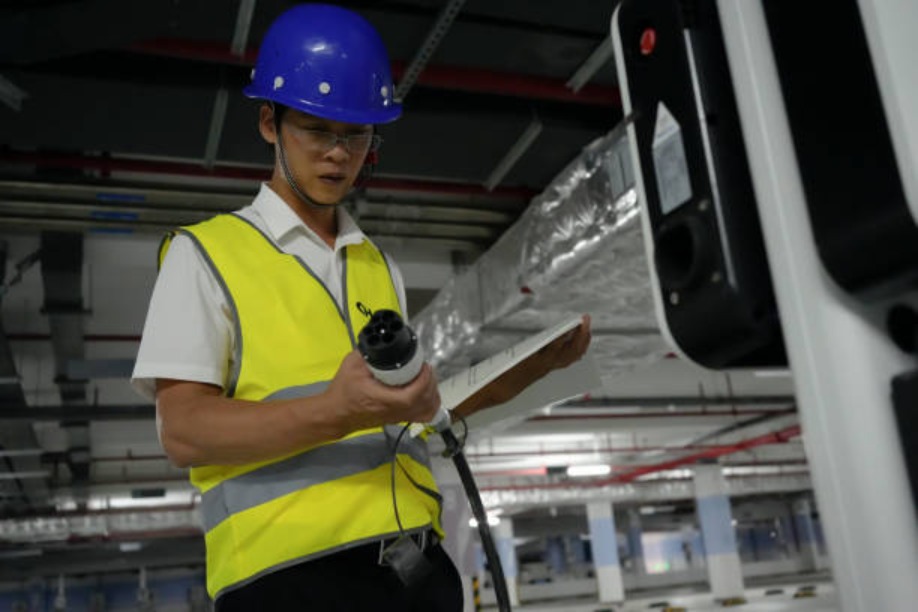Introduction
In industries where equipment, structures, and operations carry inherent risks, inspections are more than just routine procedures—they are safeguards for safety, compliance, and efficiency. One such vital process is ECT inspection services. Whether applied to manufacturing, oil and gas, construction, or power generation, these inspections play a pivotal role in detecting flaws, preventing accidents, and extending the lifespan of assets.
This article provides a comprehensive guide to ECT inspection services, exploring what they are, why they matter, and how businesses can leverage them to meet regulatory standards and enhance operational reliability.
What Are ECT Inspection Services?
ECT inspection services involve the use of Eddy Current Testing (ECT), a non-destructive testing (NDT) method that detects surface and sub-surface defects in conductive materials. Instead of damaging equipment, ECT uses electromagnetic fields to identify inconsistencies, cracks, or corrosion.
Key industries that benefit from ECT inspection services include:
- Oil and gas
- Aerospace
- Manufacturing
- Power plants
- Marine and shipping
By adopting ECT, companies can spot potential failures early and maintain equipment without unnecessary downtime.
Why Are ECT Inspection Services Important?
1. Safety Assurance
The top priority of ECT inspection services is to ensure that equipment is safe for operation. Detecting cracks or fatigue in critical components prevents catastrophic failures.
2. Regulatory Compliance
Many industries are governed by strict safety standards. ECT inspection services help businesses remain compliant with international and local regulations, avoiding penalties and shutdowns.
3. Cost Efficiency
Unplanned downtime is expensive. By identifying issues early, ECT reduces repair costs and maximises equipment longevity.
4. Operational Reliability
A well-maintained system ensures smooth operations. ECT inspection services minimise risks and support uninterrupted production.
How Do ECT Inspection Services Work?
- Electromagnetic Coil Setup
An alternating current passes through a coil to create an electromagnetic field. - Interaction with Conductive Materials
When placed near a conductive surface, the field induces eddy currents in the material. - Detection of Flaws
Any disruption—like cracks, corrosion, or thickness variations—changes the flow of eddy currents. These variations are recorded and analysed to detect defects. - Reporting
Technicians provide detailed reports, highlighting the condition of the material and recommending corrective actions.
Applications of ECT Inspection Services
Aerospace Industry
Aircraft components undergo extreme stress. ECT inspection services ensure parts like turbine blades, fuselages, and landing gear remain safe and reliable.
Oil and Gas
Pipelines, pressure vessels, and refineries rely on ECT to detect corrosion or cracking that could lead to leaks and accidents.
Power Generation
ECT inspection services are essential in monitoring boilers, heat exchangers, and turbines, ensuring efficiency and safety in energy production.
Marine and Shipping
Ships and offshore platforms benefit from ECT inspections to maintain hull integrity and prevent costly breakdowns at sea.
Manufacturing
From automotive components to production lines, ECT ensures quality control and defect detection at every stage.
Advantages of ECT Inspection Services
- Non-Destructive: No need to dismantle or damage equipment.
- Quick and Efficient: Inspections can be performed rapidly, minimising downtime.
- High Sensitivity: Able to detect small cracks and defects.
- Versatile: Effective on a wide range of conductive materials.
- Portable Equipment: Technicians can perform ECT inspections onsite with minimal disruption.
Challenges in ECT Inspection Services
While powerful, ECT inspections do come with challenges:
- Limited to conductive materials (not suitable for plastics or composites).
- Requires skilled technicians for accurate interpretation.
- Sensitivity can be affected by geometry and material thickness.
Overcoming these challenges often involves combining ECT with other NDT methods, such as ultrasonic or radiographic testing, for comprehensive results.
How to Choose the Right ECT Inspection Service Provider
When selecting a partner for ECT inspection services, businesses should look for:
- Accreditation and Certification (e.g., ISO, ASNT, or API standards).
- Experience Across Industries to ensure expertise in specific applications.
- Advanced Equipment for reliable defect detection.
- Skilled Personnel trained to interpret results accurately.
- Comprehensive Reporting with actionable insights.
Future of ECT Inspection Services
The future of ECT inspection services is being shaped by technology. AI-driven defect recognition, automation, and robotic inspections are making the process faster and more accurate. With advancements in digital reporting, companies can now integrate inspection data into predictive maintenance systems, allowing them to forecast issues before they arise.
Best Practices for Businesses Using ECT Inspection Services
- Schedule Regular Inspections – Don’t wait for breakdowns; adopt a proactive inspection plan.
- Train Staff – Ensure operators understand the importance of inspections and follow maintenance recommendations.
- Combine NDT Methods – Pair ECT with other methods for complete reliability.
- Keep Records – Maintain detailed inspection histories for compliance and long-term asset management.
Conclusion
In industries where safety and performance cannot be compromised, ECT inspection services are indispensable. They provide a reliable, non-destructive, and cost-effective way to ensure equipment integrity and regulatory compliance. From aerospace to oil and gas, the applications of ECT are vast, making it a cornerstone of modern inspection practices.
By investing in skilled providers and adopting regular inspection schedules, businesses not only protect their assets but also safeguard employees, customers, and long-term profitability.
If your company is ready to strengthen its inspection strategy, consider integrating ECT inspection services into your maintenance plan—because safety and reliability should never be left to chance.

